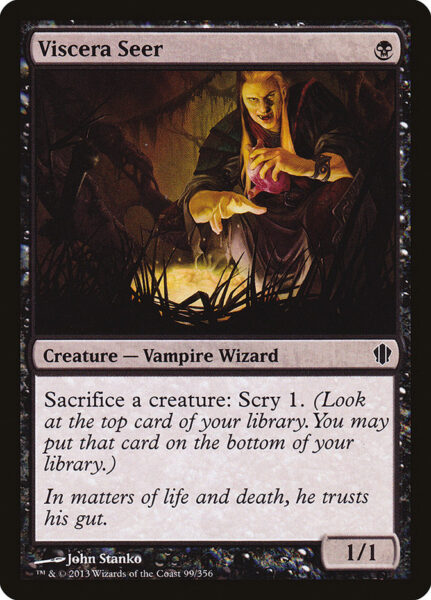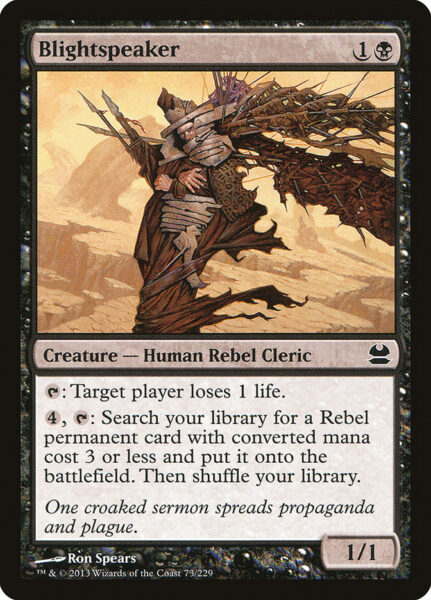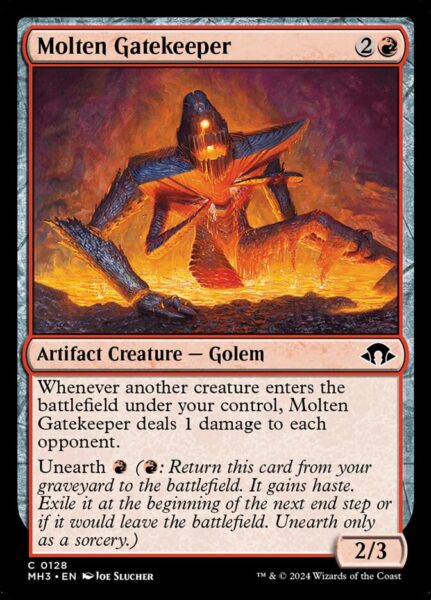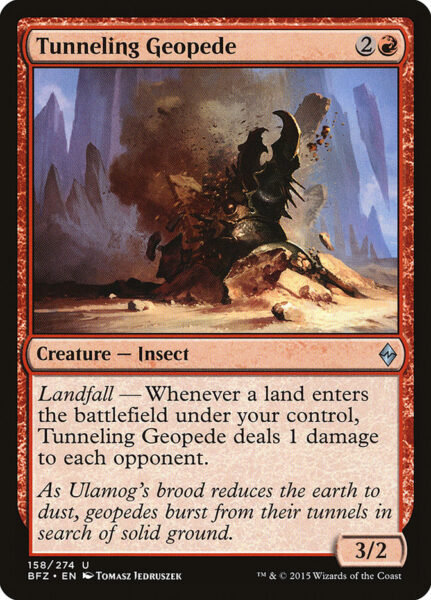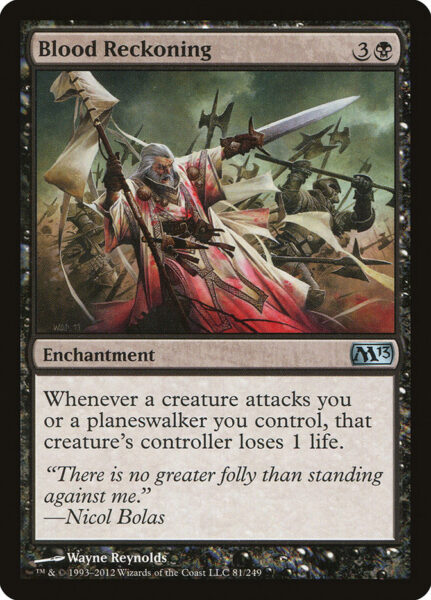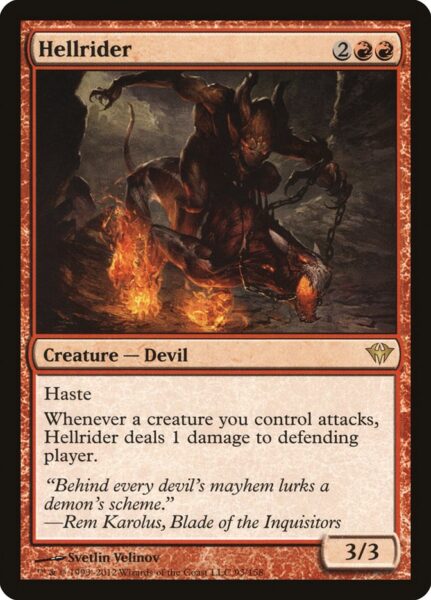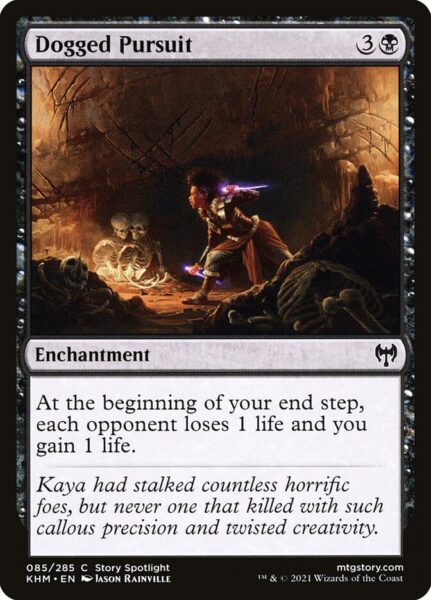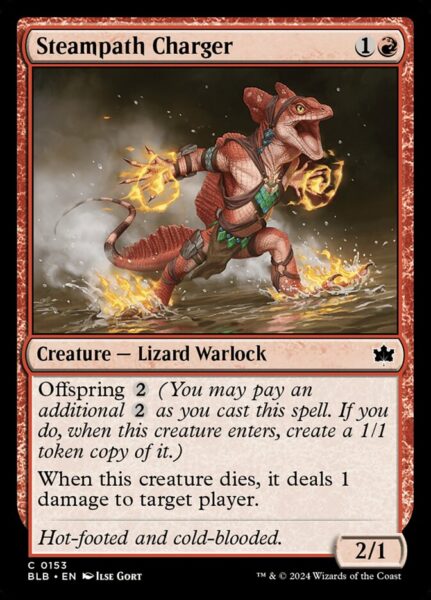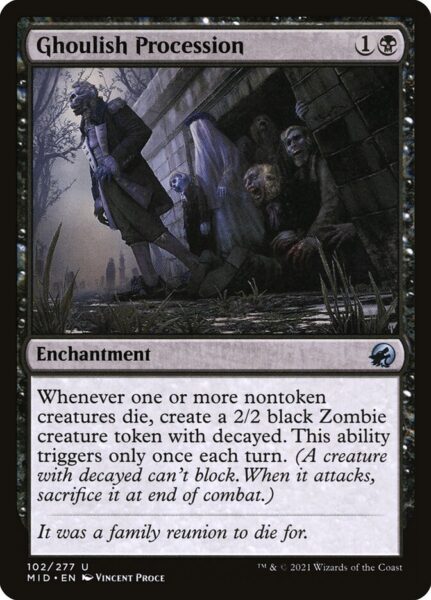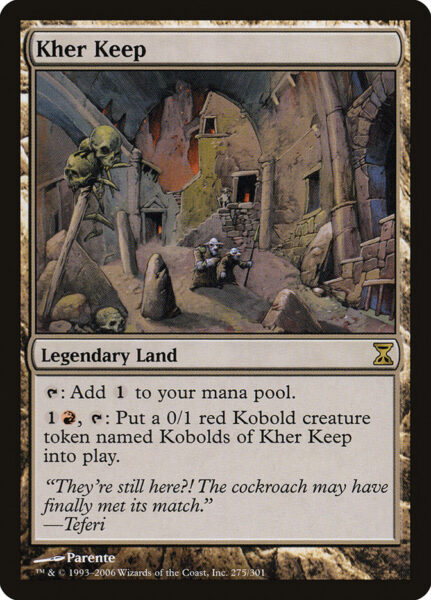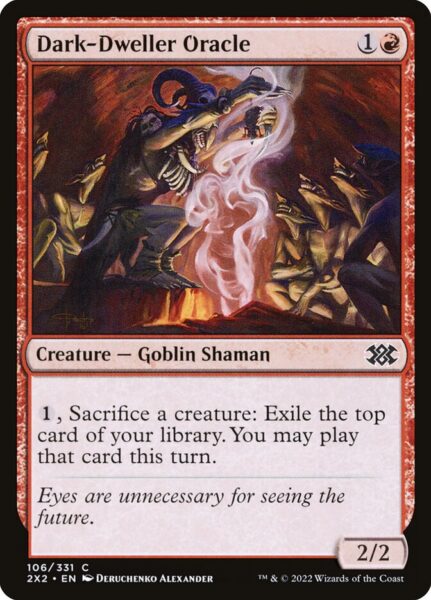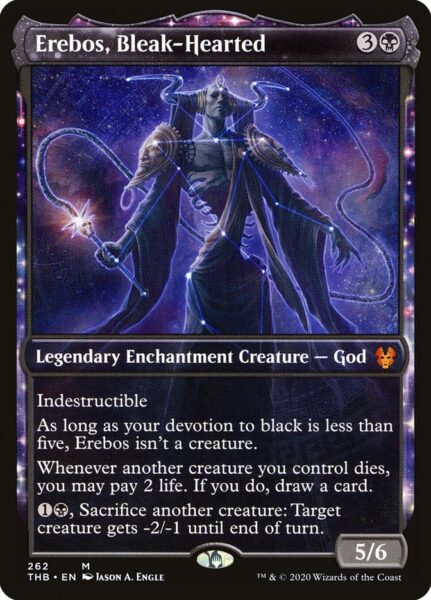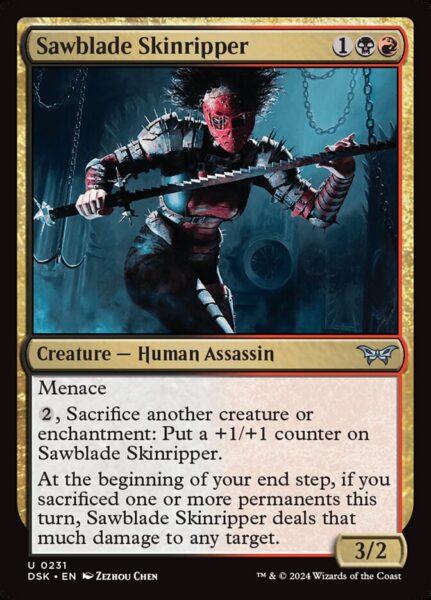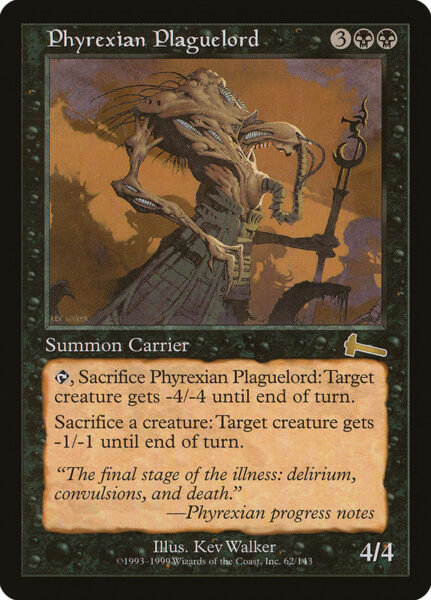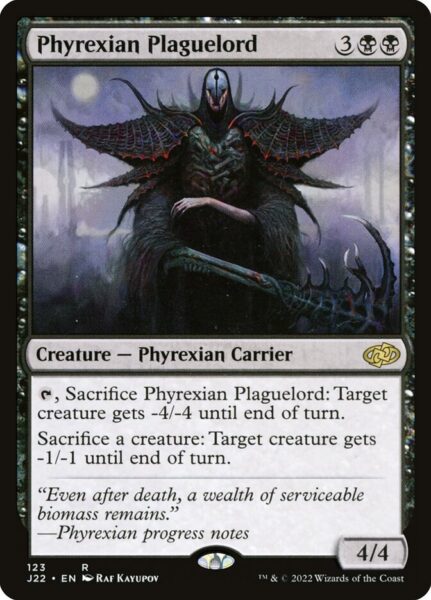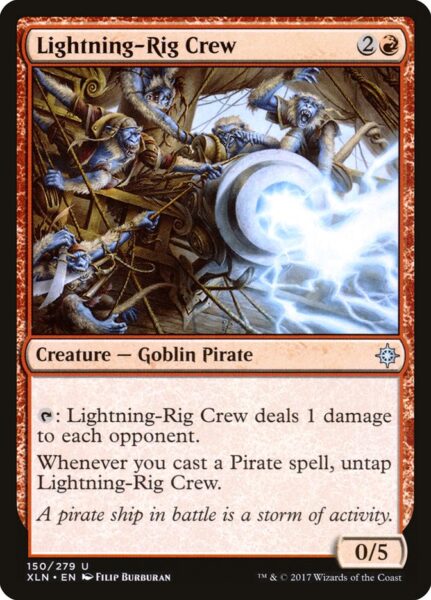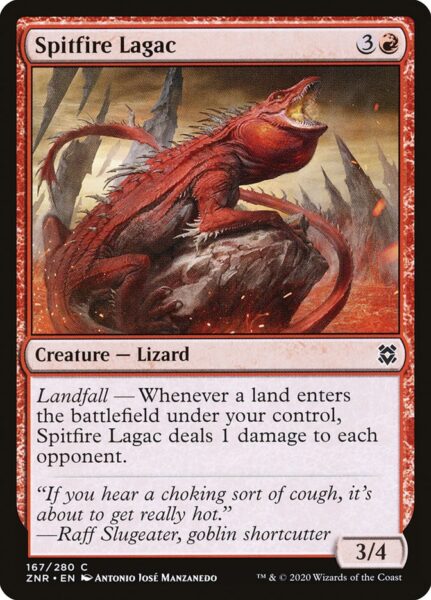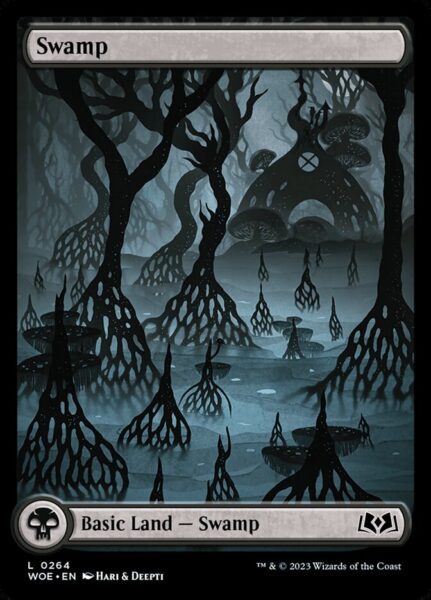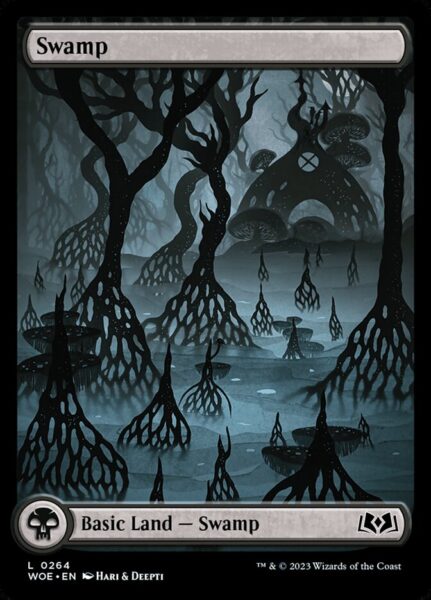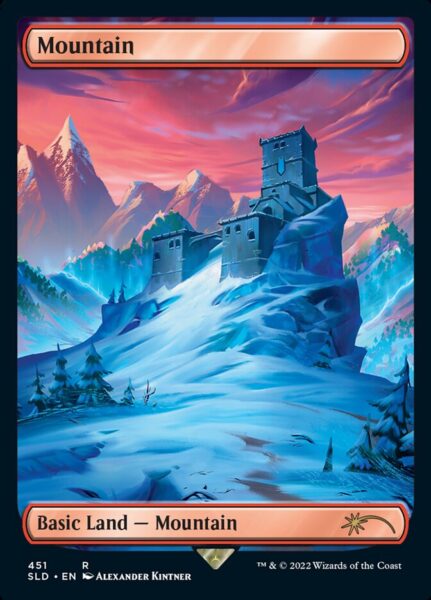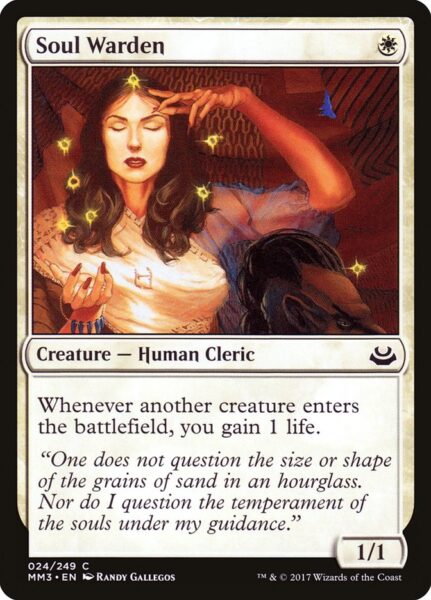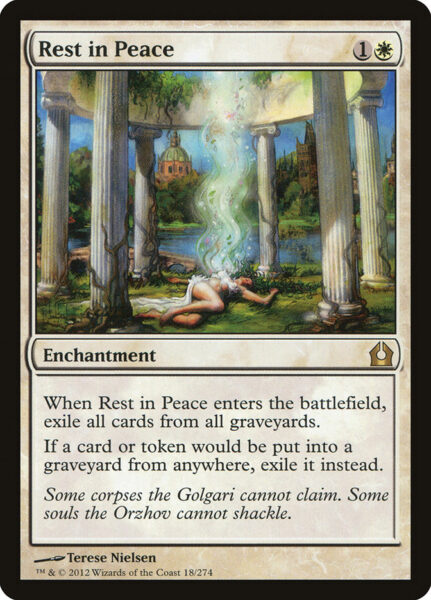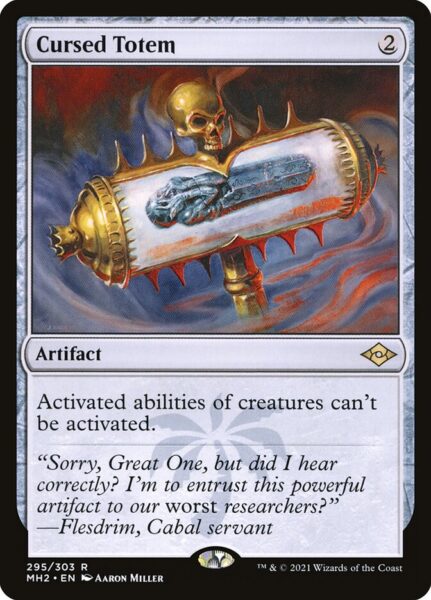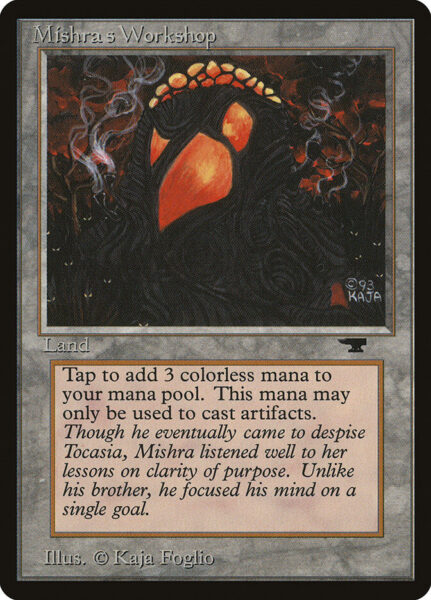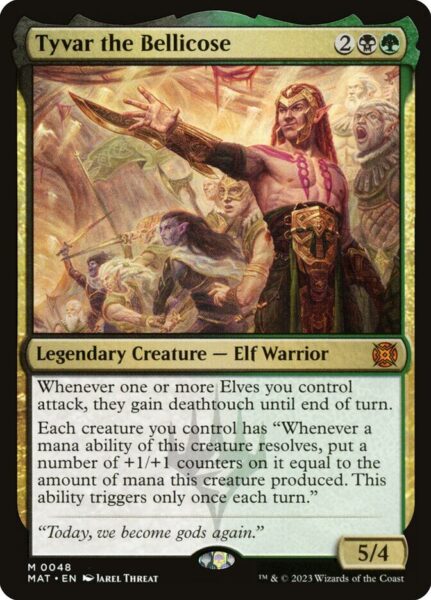by Johnny Cycles, December 20th, 2024
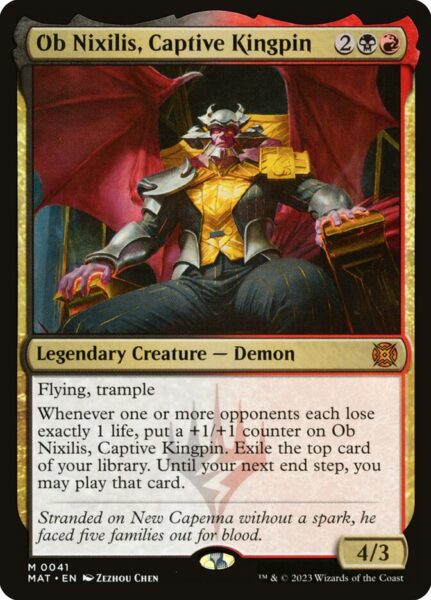
Looking for an Aristocrat-style deck that can close out games with a quickness? Love playing strategies where the whole is greater than the parts? Want a competitive, fun deck for under $100? Intrigued by the board state below? Then check out my Budget Rakdos Aristocrats deck with Ob Nixilis, Captive Kingpin!
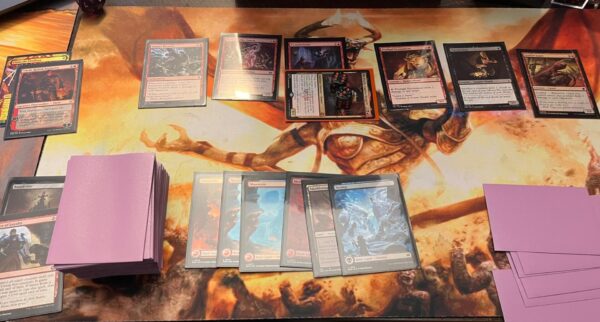
Decklist – Budget Rakdos Aristocrats with Ob Nixilis, Captive Kingpin
| Ob Nixilis, Captive Kingpin |
Creatures (39)
Planeswalkers (2)
| Tibalt, Rakish Instigator | |
| Ob Nixilis, the Hate-Twisted |
Artifacts (1)
| Sinister Monolith |
Enchantments (4)
| Ghoulish Procession | |
| Impact Tremors | |
| Makeshift Munitions | |
| Ill-Gotten Inheritance |
Instants (6)
| Not Dead After All | |
| Professor’s Warning | |
| Supernatural Stamina | |
| Undying Malice | |
| Rakdos Charm | |
| Lightning Volley |
Sorceries (9) with 1 mfdc
| Claim the Firstborn | |
| Feed the Swarm | |
| Grapeshot | |
| Bloody Betrayal | |
| Furnace Reins | |
| Kari Zev’s Expertise | |
| Thatcher Revolt | |
| Traitorous Greed | |
| Song-Mad Treachery (mfdc) |
Lands (38) with 1 mfdc
| Barad-dûr |
| Command Tower |
| Demolition Field |
| Field of Ruin |
| Foreboding Ruins |
| Hostile Hostel |
| Jagged Barrens |
| Kher Keep |
| Maestros Theater |
| Shadowblood Ridge |
| Smoldering Marsh |
| Song-Mad Ruins (mfdc) |
| Sunscorched Desert |
| Tainted Peak |
| Temple of Malice |
| Mountain (12) |
| Swamp (12) |
Deck Tech
The Aristocrat Archetype in Commander
Check out my article on my non-budget Ob Nixilis, Captive Kingpin deck for a detailed discussion of the Aristocrat archetype, how to build this archetype in Commander, and why Ob Nixilis, Captive Kingpin is, by far, the best commander for Rakdos Aristocrats.
The three essential ingredients for the Aristocrat archetype to succeed.
Put briefly, the Aristocrat archetype is seeking to sacrifice permanents for value and damage. To achieve this goal, we need three things: fodder to sacrifice, a sacrifice outlet, and a way to punish our opponent for each permanent sacrificed.

Enter Ob Nixilis, Captive Kingpin and suddenly our Aristocrat strategy has both a new dimension AND a legitimate finisher in the command zone. Now, rather than rely solely on pinging our opponent via the above three types of cards 40 times, we are interested in dealing a single damage as many times as possible. Well, actually, just 17 really.
The Aristocrat strategy of sac and drain via Blood Artist effects fits nicely with this strategy, but so do a whole host of other cards that make our deck more resilient, more flexible, and more powerful.
We’ve shifted our focus from simply sacrificing creatures for value to a multi-pronged attack that punishes our opponent in ways ranging from playing lands to playing creatures; from Rakdos versions of the OG pinger, Prodigal Sorcerer, to gaining, then draining. And this isn’t even all the different ways we can deal a single damage to our opponent.
Here are a few examples of other angles of dealing a single point of damage to our opponent, each of which fits our budgetary constraints. I’m not playing these mostly because they’re in my non-Budget version.
On to the deck!
Fodder for Sacrifice
Being on a budget means we don’t have access to the most efficient ways to make creatures to sacrifice, such as Bitterblossom, but we don’t really miss it. We have such a diverse suite of cards that deal a single damage that we will often only need to sacrifice one or two creatures to close out the game. And, having played this archetype in Standard way back when, this is not so different from then. The deck was so powerful precisely because it could start out as an aggressive, flood-the-board strategy, then quickly pivot to a sacrifice and drain one to finish opponents off.
This deck will play similarly. If we have multiple ways to drain our opponent for each creature that dies, then we’ll sacrifice what we can to take advantage of this board state. Here is our best fodder for sacrifice in this situation, divided into two categories: our own creatures and our opponent’s.
Our Own Fodder
Barad-dûr – not the most efficient or practical way of making a creature to sacrifice, but sometimes the hoops we have to jump through to activate this legendary land will not just be worth it; they’ll be game-ending. Also, I won’t lie, I was pretty excited to find this rare land was under $1.
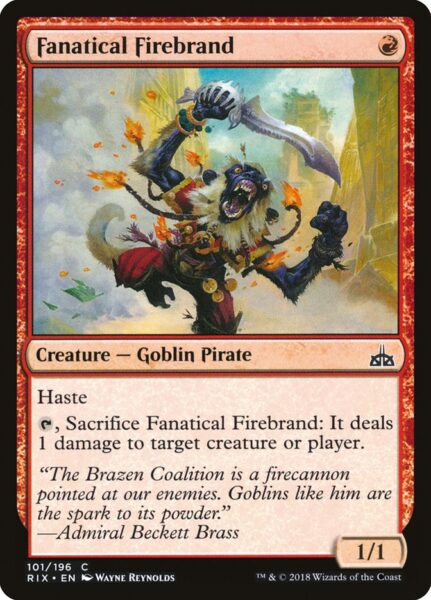
Fanatical Firebrand – this Goblin Pirate represents a subcategory for this section: it’s one of several cards that ping our opponent as part of its own death trigger. Thus, with something like Mayhem Devil out, we get to hit our opponent twice for 1 damage, which means two Ob Nixilis activations and 2 +1/+1 counters. What a deal!
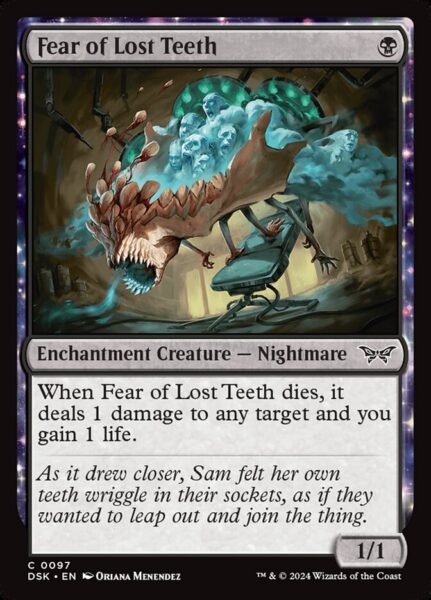
Fear of Lost Teeth – not only do we get the 1 damage dealt, but we gain 1 life, which triggers Marauding Blight-Priest, which will ping our opponent for another 1 damage. Oh, the synergies! But before you declare this one a strictly better Fanatical Firebrand, it can’t sacrifice itself, like the Goblin. I’ll let you decide which is better.
Footlight Fiend – a strictly worse Fear of Lost Teeth, it does what we need it to upon death.
Ghoulish Procession – one of the best ways for us to combo off with death triggers is to sacrifice creatures that replace themselves. This enchantment does just that, with the downside of being limited to once per turn. Its upside? It triggers when any creature dies, not just ours.
Kher Keep – another rare land under $1! How thrilling! AND, it lets us produce a token every turn, if that’s where we’re at in the game. Creating and sacrificing tokens synergize with more than just Mayhem Devil. Mirkwood Bats and Nadier’s Nightblade allow us to double, triple, or quadruple our Ob Nixilis triggers off a single token being produced, then sacrificed.
Steampath Charger – for an additional , we get a 2/1 instead of the expected 1/1 of Fanatical Firebrand et al., while for an additional more, we get two creatures that will hit our opponent for 1 damage upon dying. Now that’s some value!
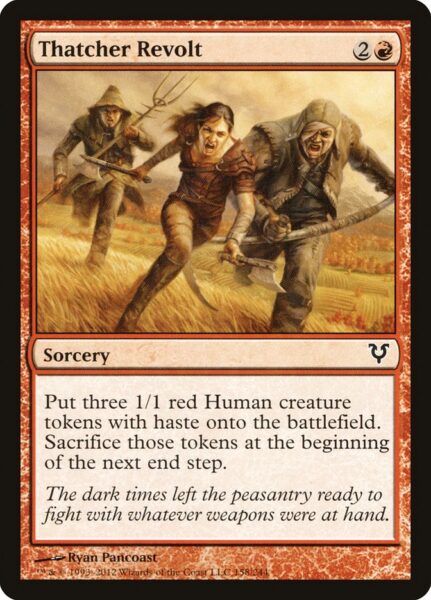
Thatcher Revolt – I love this card. It does everything we want. We get three creatures entering the battlefield to trigger Impact Tremors three times. We get three tokens that trigger the first part of Mirkwood Bats. We get hasty 1/1s that can attack if the board state allows. And we get bodies that sacrifice themselves, triggering both the second part of the above mentioned Bat and any kind of death/sacrifice trigger ability, say, like the one Mayhem Devil has. And all of this is on top of being soul-pleasingly synergistic with Falkenrath Aristocrat!
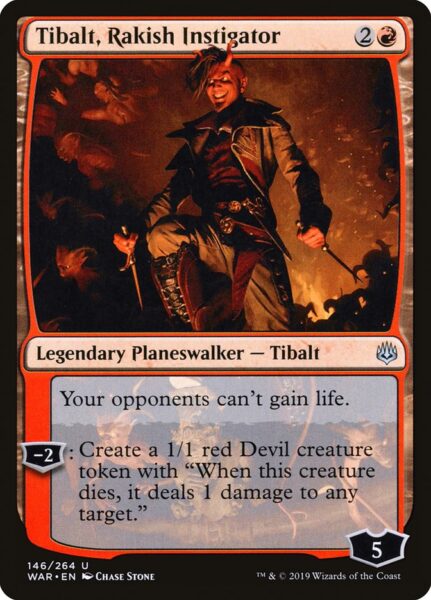
Tibalt, Rakish Instigator – hosing lifegain is important for our deck, though less so now that we have a commander that can 1-shot our opponent in combat. It’s really his -2 we’re interested in for the same reasons we’re playing Footlight Fiend. However, there’s another, more nostalgic reason I like this card.
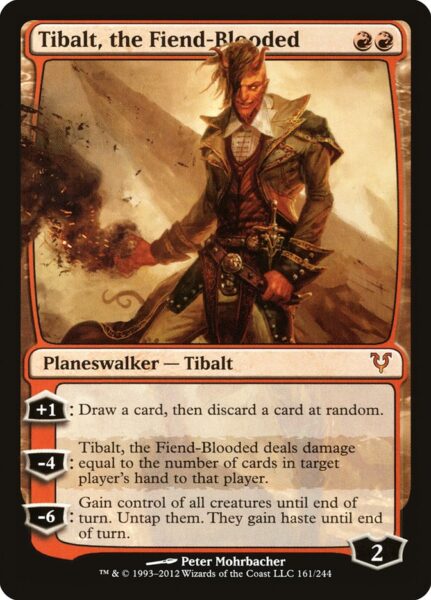
This Tibalt came out soon after I started playing Magic again in 2011 and wow, it was soooo bad. It wasn’t even good in Sealed, which tells you something. And it’s still really, really bad. Wizards decided to give Tibalt some love and print better and better versions of him, to the point that he broke Modern for awhile. I guess I like a comeback story.
Woe Strider – who needs a 0/1 Goat token? We do! I wonder why Wizards chose a goat. Sure, I get Greek mythology and all that, but is there a story I’ve forgotten in which some monster-like creature eats a goat? I’m guessing yes.
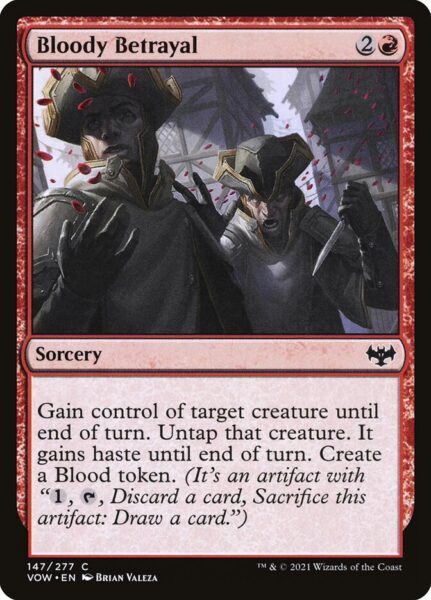
Stealing our Opponent’s Creatures to Sacrifice
One of our best and swingiest plays is to cast a Bloody Betrayal, steal our opponent’s best creature, and sacrifice it to trigger all of our pieces and grow our Ob Nixilis to even greater proportions! It’s truly addictive. If you haven’t lived this amazing experience, you’re missing out. Here are the cards that let us live this particular dream.
Claim the Firstborn – a 1-mana conditional steal spell, it’s a bit of a high-risk, high-reward inclusion. When it’s good, the blowout will be especially brutal. When it’s bad, it could cost us the game, particularly as we haven’t exhausted the number of 3-mana unconditional steal spells we could include on a budget (Traitorous Blood comes to mind).
Bloody Betrayal – Red steal effects like this have been in Magic for a long time (anyone know the first such card printed?). Bloody Betrayal is an example of the power creep even these innocuous commons are subject to. We get to steal a creature AND create a Blood token, which not only digs us for what we need, but synergizes with cards like Mirkwood Bats and Disciple of the Vault. Yes, please!
Furnace Reins – power creep’s inexorable imprint is this time evidenced by the Treasure token we get when the creature we steal deals damage to a player (or battle…what, what!!).
Kari Zev’s Expertise – up until just now, I had Traitorous Greed in this slot. However, upon searching for the first Red steal effect in Magic, I found this rare from Aether Revolt. What’s better? Casting something from our hand for 2 mana or less for free, or getting 2 mana of any one color? Yes, the former seems obviously better, but we play cards like Gnawing Zombie that synergize with the latter. I’ll let you decide.
Song-Mad Treachery – at 5 mana, this effect is super overcosted, but since it’s on the back of a land and within budget, it’s an auto-include.
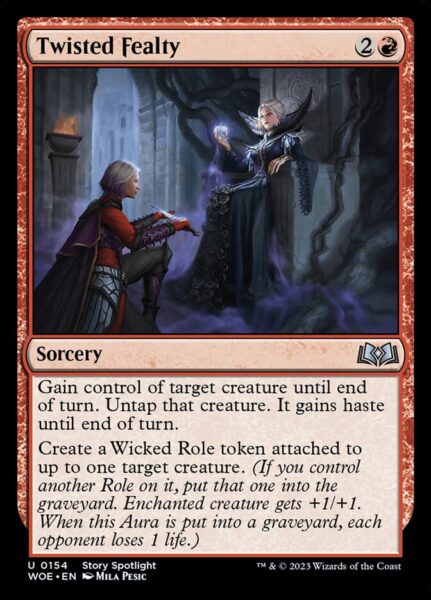
Twisted Fealty – another sweetly synergistic card for our strategy! Not only do we get to steal a creature, but, assuming we attach the Wicked Role token to it, we get another Ob Nixilis trigger when we sacrifice it. So. Much. Value.
Zealous Conscripts – 5 mana is a lot, but consider not just the hasty 3/3 body, which IS sort of meh in Commander. Look instead at the words, “target permanent.” Sure, we’ll mostly want to steal a creature, but there will be a time when we can take a Planeswalker the turn before our opponent untaps and ultimates it. Or maybe we’ll take a Phyrexian Tower that’s too expensive for our budget deck. Or a Mana Vault our opponent hasn’t paid to untap, but which we get to use as part of our spell’s effect. The fun possibilities are unlimited!
Sacrifice Outlets
Even on a budget, we have access to a variety of powerful and efficient ways to sacrifice creatures, which is an essential aspect of the Aristocrat archetype. And, while Ob Nixilis incentivizes us to find other means of dealing exactly one damage to our opponent, we haven’t eschewed this traditional Aristocrat angle of attack. Furthermore, as detailed above, much of what we want to sacrifice brings us additional value, either by dealing one point of damage upon death (Fear of Lost Teeth) or because it’s our opponent’s creature. We really don’t want to leave the death of our creatures to our opponent’s discretion.
We play 14 sacrifice outlets, some of which are repeatable, while others are 1-time deals. Each, however, brings along additional value without needing another card, say a Blood Artist effect, on the battlefield. Of course, we don’t want to sacrifice our creatures for less than maximum value, but something like Erebos, Bleak-Hearted gives us flexibility to use its ability as spot removal if necessary or to dig for what we’re missing. There will be times when this is what we need, even if it’s not what we want.
Dark-Dweller Oracle – this Goblin Shaman is an example of what’s great about building on a budget. When you have access to all the cards, it can be hard to make room for a sac outlet that we have to pay to activate. After all, is conditional card draw for really better than extra mana (Ashnod’s Altar) or straight up drawing a card (Ayara, First of Locthwain)? Probably not, but it’s a closer thing than it may first seem. This former rare is a diamond in the rough for us, serving two important purposes, all for under $1!
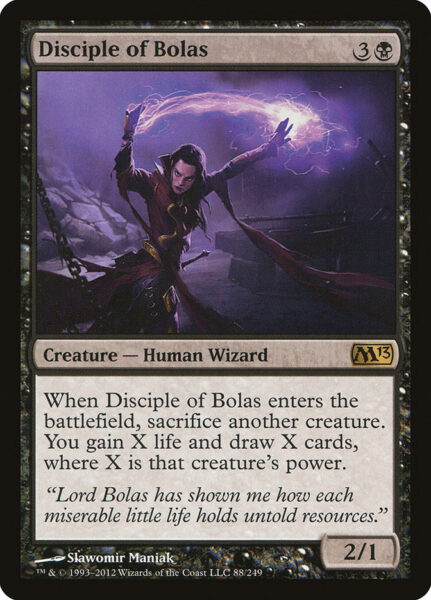
Disciple of Bolas – speaking of amazing cards under $1! I keep checking the price on this to make sure I haven’t misremembered its real price and, thankfully, it’s still within our budget. The dream for this Human Wizard is to steal our opponent’s largest creature with Twisted Fealty and sacrifice it to Bolas, drawing a ton of cards and gaining a ton of life, which will trigger Marauding Blight-Priest, which will trigger Ob Nixilis, etc…. Hopefully by now the synergies of this deck are coming into beautiful, sweet focus.
Erebos, Bleak-Hearted – another card I can’t believe is under $1, but this time, there’s only a single copy going for this cheap. Still, that counts! Another of our repeatable sac outlets, this one comes at the cost of , but comes with the bonus of doubling as removal and card draw. That’s a lot of extra value for doing something our deck is built to take full advantage of…so that’s like double advantage. Or just a 5-for-1 or something, depending on our board state.
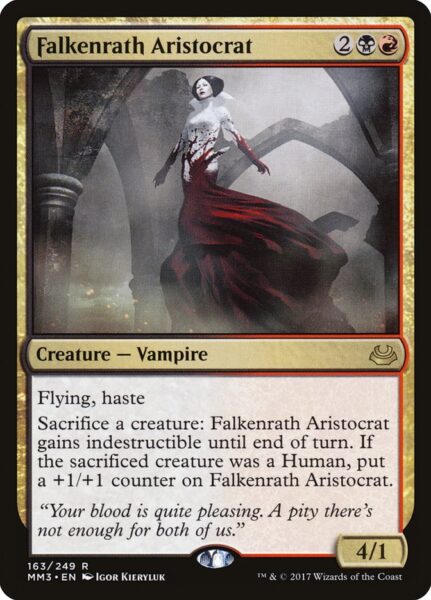
Falkenrath Aristocrat – I think this was the first card that really showed me the power of flying and haste in 60-card formats. Attacking the turn you resolve a threat is like half a Time Walk basically… While having another flying threat is great for when our commander isn’t on the battlefield, what we’re really interested in is sacrificing creatures repeatedly for no further mana investment. What a fantastic card!
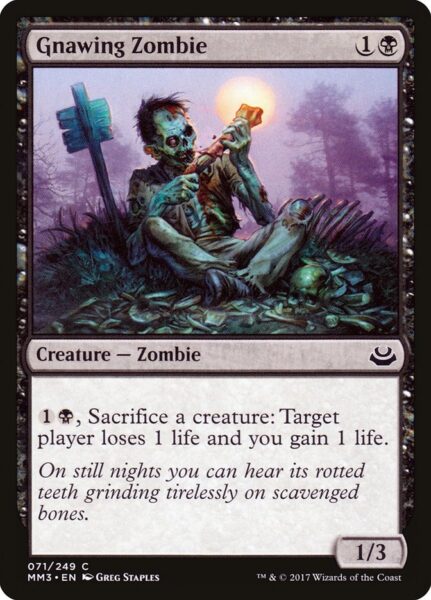
Gnawing Zombie – speaking of fantastic cards…This one is great for the art as much as for the synergy with our deck. to sacrifice a creature is a bit much, but since it comes with it’s own Blood Artist drain and gain as part of the cost, it’s worth it. That’s two things we want in our deck in a single card. Very nice.
Grima Wormtongue – two things in one, you say? How about four? Hosing lifegain, giving us a sac outlet, draining our opponent for exactly 1 life, AND making a token to sacrifice is a whole lot of what we’re looking for, and all on an uncommon.
Hidetsugu, Devouring Chaos – I speak at length about this card in discussing my choice for him to helm this deck before the printing of Ob Nixilis, Captive Kingpin. He does a lot of what we want. He’s a repeatable sac outlet with extra value. And he gives us conditional card draw attached to direct damage. All of this comes at the cost of additional mana, but this Ogre Demon is worth it, particularly on a budget.
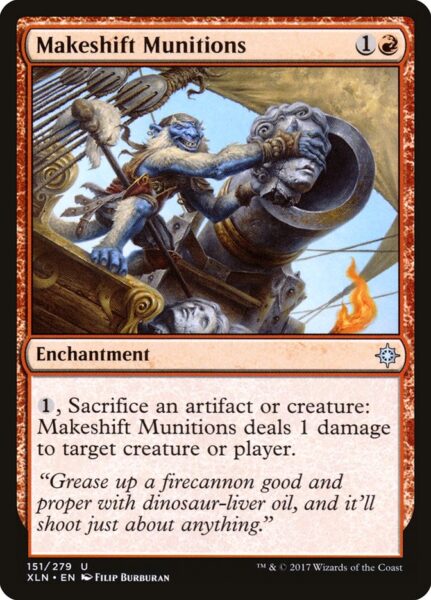
Makeshift Munitions – a pirate monkey firing a statue’s head from a canon? AND it does two things we want? Cards like this warm my budget-loving soul.
Phyrexian Plaguelord – I like the art on both versions, but there’s something appealing to me about the old art. It’s creepy and weird and kind of disgusting. The new art is sleek and foreboding and the dude has some kind of multi-headed axe for an arm, but I still prefer the original. Oh, and the card is great for our deck. A repeatable sac outlet for no additional mana investment attached to removal…all the turn he enters. And, as a bonus, he can sacrifice himself.
Popular Egotist – another repeatable sac outlet…for a price. This one comes with the added bonus of a Blood Artist effect, giving us two of what we want in a single card!
Sawblade Skinripper – this card has a lot going on…and not just in the art. I mostly see this as another sac outlet with great upside. Paying a turn will limit how often we can activate this Human Assassin, but the final block of text isn’t contingent on how we sacrifice our permanents. From lands, to Treasure tokens, to creatures via Viscera Seer, Sawblade Skinripper counts them all, then deals that damage to whatever or whomever we choose. Cards like this quickly take us from pinging our opponent to death to straight up throat punching them.
Spark Harvest – a sac outlet attached to unconditional removal is great. What’s better? Stealing our opponent’s creature to sac to cast this spell in order to kill another of our opponent’s creatures. Ah, the dream shall be realized!
Viscera Seer – cheap, efficient, effective… This Vampire Wizard is arguably our best sac outlet.
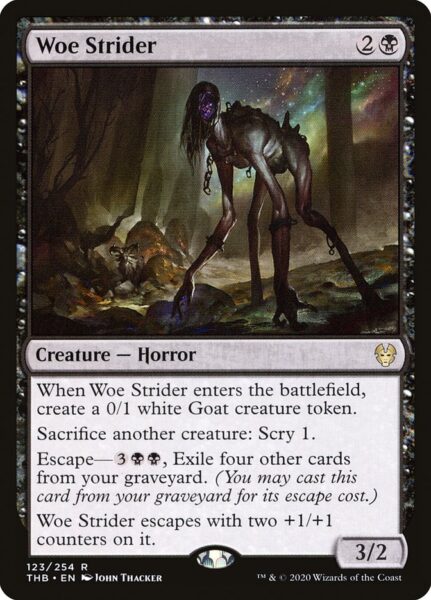
Woe Strider – okay, maybe THIS is our best sac outlet. We’re most interested in the free sacrifice, but the Goat we get furthers our gameplan nicely, as well.
Blood Artist Effects
Blood Artist was the OG combo piece for Aristocrat decks, draining our opponent for 1 for each creature sacrificed. Unfortunately for us, despite its many reprintings, the card is still outside of our budget. However, Wizards has printed a variety of similar effects, many of which don’t target a player, but rather drain each opponent. This is a direct result of Commander’s burgeoning popularity. Thanks to this, we have many great budget-friendly options to choose from.
And, much like our non-budget build, we have a bunch of ways of dealing 1 damage to our opponent that don’t involve anything dying. Nevertheless, I’m lumping all these cards under the above title, since Blood Artist was the engine that made this an archetype. However, they are very much, and intentionally so, not all the same. This diversity of threats insulates us from graveyard hate, in particular, while giving us multiple ways to deal a single point of damage in a turn that don’t all require a creature dying.
Creatures Dying
Falkenrath Noble – for an additional , we get a 2/2 flier instead of a 0/1 painter.
Gnawing Zombie – for we get a repeatable way of draining and gaining.
Grima Wormtongue – a lot of powerful effects attached to just draining, no gaining.
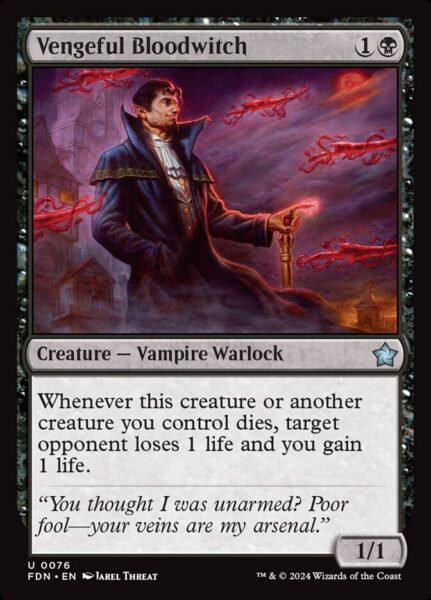
Vengeful Bloodwitch – here’s a riddle. Why is this Vampire Warlock with its single printing under $1, while both Blood Artist and Zulaport Cutthroat (it’s true analog) are more than $1, despite numerous printings? We don’t care. We’re just happy to have this as an option and are waiting for it to climb above the $1 mark to join its cousins.
Tokens Matter
These cards only trigger when a token is involved. Sounds kind of meh until you realize it’s any token, not just creature tokens.
Mirkwood Bats – we get the trigger both when we create and sacrifice a token.
Nadier’s Nightblade – a Blood Artist effect whenever a token “leaves” the battlefield, this card will trigger when our opponent exiles all of our Treasure tokens with Farewell.
We have 10 ways of making tokens, some of which, like Ghoulish Procession and Mahadi, Emporium Master, are repeatable, while all synergize in other ways, like this one:
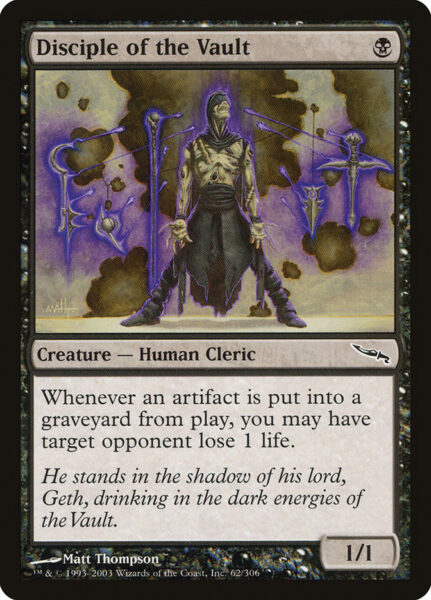
Artifacts Matter
The only one of its kind in our deck, Disciple of the Vault can do some major work against commonly played cards (looking at you, Smothering Tithe).
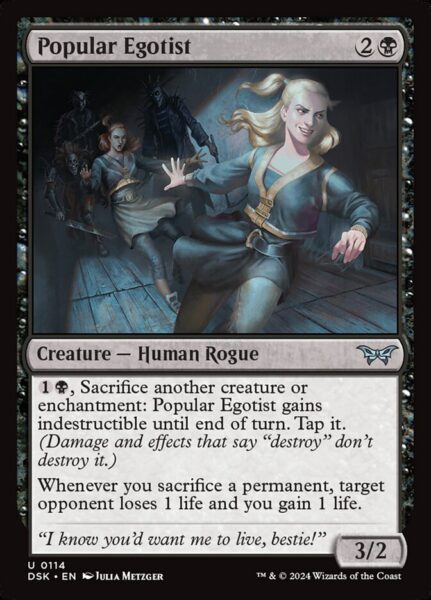
Sacrificing Permanents
Mayhem Devil – other than punishing players looking to abuse Treasure tokens, this Devil also deals 1 damage whenever someone cracks a fetch or casts cards like Diabolic Intent or Bone Splinters. It’s also really good against us…
Popular Egotist – restricted to only permanents we sacrifice, we do get the added bonus of gaining a life, not just draining our opponent.
Prodigal Sorcerer Effects
I discuss this kind of card as one avenue for tweaking my non-budget deck and I’m excited to see it in action here. It is one of the biggest differences, other than budgetary, between the two decks and the two strategies. Rather than simply using all the cards under $1 from that deck to fill out this one, I’ve taken this approach to make the play experience different. I won’t fault anyone who chooses to take a different route, of course, and I’ve included some of the same cards from that deck here as too important to our strategy. However, including cards that tap to deal a single point of damage has its own benefits, beyond simple variation being the spice of life.
Blightspeaker – our first card in this section is unique in that it doesn’t deal damage; rather it drains a player 1 life. It’s tutor ability is DOA in our deck, but there is one possible target we could consider playing: Big Game Hunter. The other Rebels that fit our colors are terrible in our deck (and most others, I imagine). As a tribe, Rebels are fairly underrepresented in Magic, with only 58 representatives. Wizards, if you’re reading this and need some inspiration for a Commander Pre Con, give Rebels some love!
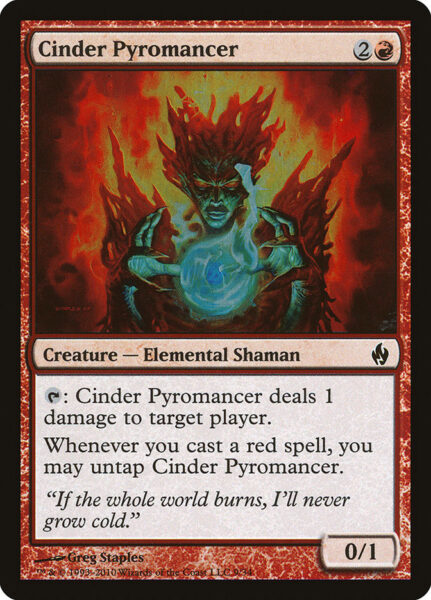
Cinder Pyromancer – our first example of how unexpected and powerful synergies can be discovered upon taking a deck’s strategy in a different direction. Once we have our commander out, which, by the way, follows nicely on curve after this Elemental Shaman, every subsequent Red spell we cast gives us another Ob Nixilis trigger.
Grapeshot – okay, I’ll admit it, this one is a guilty inclusion and probably one of the first to be cut. I have visions of casting this with a storm count of ten, getting a bunch of triggers from our Ob Nixilis, and swinging for lethal. The reality, though, is we’re much more likely to have a storm count of two than ten. Still, I want to see it in action before I cut it.
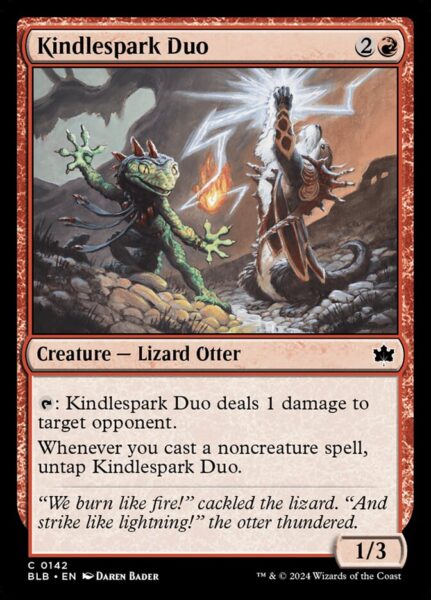 Kindlespark Duo – a Cinder Pyromancer that untaps when we cast a noncreature spell. This one got some power creep and is a 1/3 instead of a 0/1.
Kindlespark Duo – a Cinder Pyromancer that untaps when we cast a noncreature spell. This one got some power creep and is a 1/3 instead of a 0/1.
Lightning-Rig Crew – ditto but this Goblin Pirate untaps whenever we cast a Pirate spell. And before you dismiss this particular text as irrelevant, we play a whooping one other Pirate. Boom.

Lightning Volley – I’m even more stupidly excited about this card than Grapeshot. And, to be fair, we have a way better chance of dealing 10 individual points of damage with this instant than the aforementioned sorcery. Yes, four mana is a lot, but why build around a budget if we aren’t going to play synergistic, hidden gems like this one.
Lobber Crew – back to our regularly scheduled programming of tapping to deal 1 damage and untapping when we cast…this time, it’s a multicolored spell. How’s that for a diversification of threats!
Makeshift Munitions – I’ve already discussed this card at length above, so all I’ll say here is that, despite there being a Pirate Monkey in the picture, it’s an enchantment and won’t untap Lightning-Rig Crew.
Prodigal Pyromancer – someone in Wizards decided Magic really needed a Red version of Prodigal Sorcerer. Thank you!
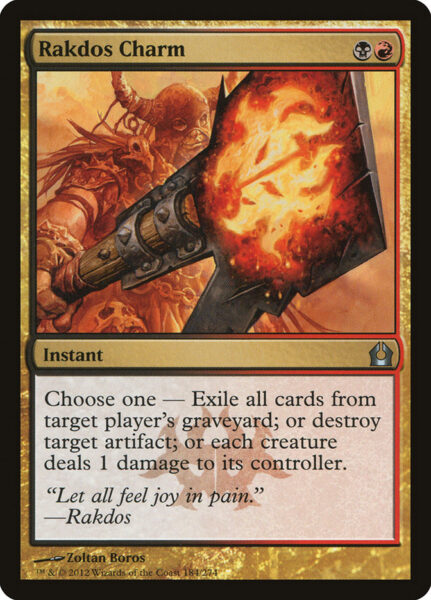 Rakdos Charm – our third way of having a single spell trigger our commander upwards of 10 times. This one hits us, too, so be careful. I’m mostly including this card in the deck to give us some graveyard and artifact hate. Ah, who am I kidding? I want to live the dream!
Rakdos Charm – our third way of having a single spell trigger our commander upwards of 10 times. This one hits us, too, so be careful. I’m mostly including this card in the deck to give us some graveyard and artifact hate. Ah, who am I kidding? I want to live the dream!
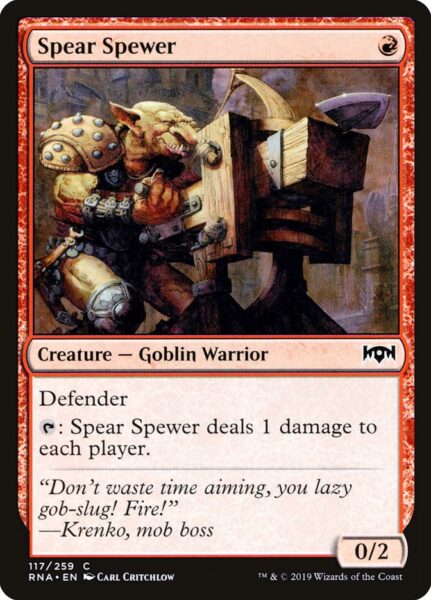
Spear Spewer – more of this, please! A 1-mana pinger is exactly what we want, even if we get hit too.
Thermo-Alchemist – a 2-mana pinger is acceptable, I suppose. We aren’t heavy on instants and sorceries, but we’ll still get some extra value out of this Human Shaman from time to time.
Enters the Battlefield
Who wants creatures to die to deal a single point of damage when we can get the same result from bringing creatures to life?
Impact Tremors – an enchantment that can come down as early as turn 2, this is one of our best alternative ways to trigger our commander and punish our opponent.
Molten Gatekeeper – a card printed since I wrote about my non-budget deck I’m excited to see this Golem in action.
Drawing Cards
Everyone loves drawing extra cards. Let’s make them pay.
Ob Nixilis, the Hate-Twisted – 5 mana is a lot, but the other ways we have of punishing our opponent’s card draw are not budget friendly. His -2 is nice removal or card draw, giving us a way to get our various death triggers while finding more action.
Gaining Life
There are several cards that drain our opponent a single life any time we gain life. That sounds like a winning combo for our deck, right?
Marauding Blight-Priest – uh, does what I just said…
Starscape Cleric – does what I just said AND can make a token copy of itself for an additional . All on a 2/1 flier.
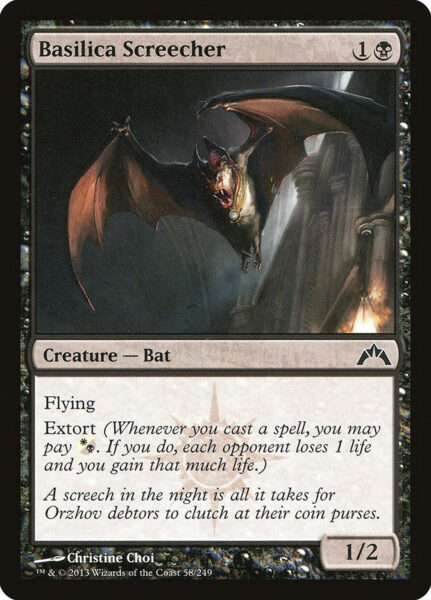
Extort
Extort is an easily repeatable way of draining our opponent a single life. It’s low-hanging fruit, though, honestly, most of the extort cards in Black are overcosted and unplayable, even in a budget deck. This 2-mana bat, however, is not. And, not only does it have extort, it has evasion and 1 power, meaning there’s a good chance we’ll go to combat and hit for 1 the turn we cast Ob Nixilis.
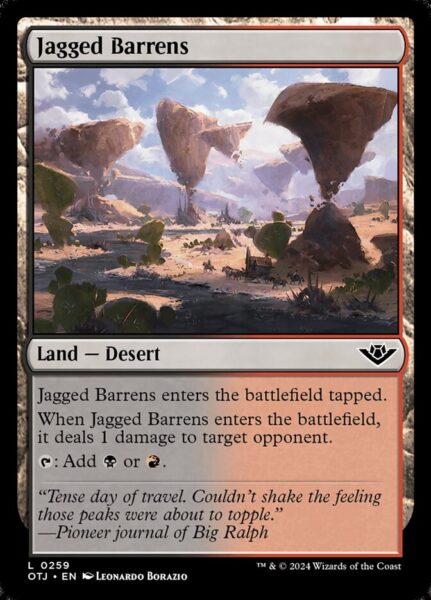
Playing Lands
We have more ways than just landfall triggers to deal 1 damage to our opponent with our lands. Watch out!
Jagged Barrens – another card that was released after I wrote about my non-budget Ob Nixilis deck, this Desert is some sweet, sweet mana-fixing tech.
Spitfire Lagac – even on a budget, we have a few ways of making multiple land drops in a single turn. Three, to be precise: Demolition Field, Field of Ruin, and Maestros Theater, which synergizes nicely with our lifegain cards above.
Sunscorched Desert – taps only for a colorless, but it’s our second Desert that pings our opponent upon entering.
Tunneling Geopede – for less than Spitfire Lagac, we get the same effect on a 3/2, instead of a 3/4.
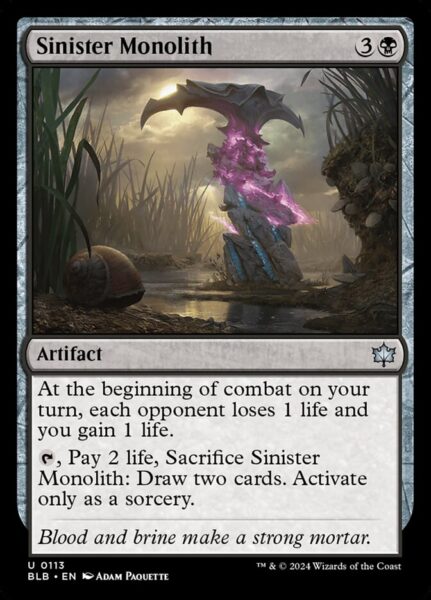
1 Damage, No Hoops Necessary
Sometimes it pays to deal 1 damage without all the death triggers or other nonsense.
Ill-Gotten Inheritance – we could play Dogged Pursuit here, but we’re running that in the non-budget version. Otherwise, a case can be made for wanting our Ob Nixilis trigger coming at the beginning of our turn versus on our end step (with our triggers stacked so that we get the card until our NEXT end step), but this enchantment comes with more flexibility.
Sinister Monolith – speaking of flexibility! I really like this card. It does what we want in triggering our commander every turn, but we can sac it to dig for lands (usually) or something else we may need. It also synergizes with Mayhem Devil, so that’s cool.
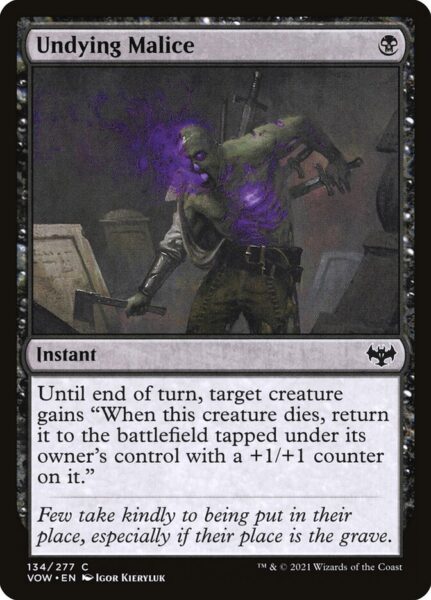
Protecting our Commander
Given how reliant we are on our commander, it’s imperative that we do our best to keep it alive. This is true for our non-budget version, as well, but at least with that deck, we have a variety of powerful cards we can ride to victory without Ob Nixilis, Captive Kingpin if necessary. Being on a budget means we really are playing a pile of underwhelming, underpowered cards that can only hope to ping our opponent to death before running out of the resources to do so. Thus, I’ve made room for ways to keep our commander from returning to the command zone.
Not Dead After All – returns our commander to the battlefield and out of Lightning Bolt range, which is nice. If we use it to keep a combo piece alive, the Wicked Role token attached to that creature will trigger Ob Nixilis when it hits the yard.
Professor’s Warning – our best protection spell, since the other three return Ob Nixilis to the battlefield after death, which means he’ll lose all of our hard-earned counters.
Supernatural Stamina – the +2/+0 might let us trade in combat.
Undying Malice – another trick that will bring Ob Nixilis back and out of range of Lightning Bolt…or, perhaps more likely, a Keranos, God of Storms trigger.
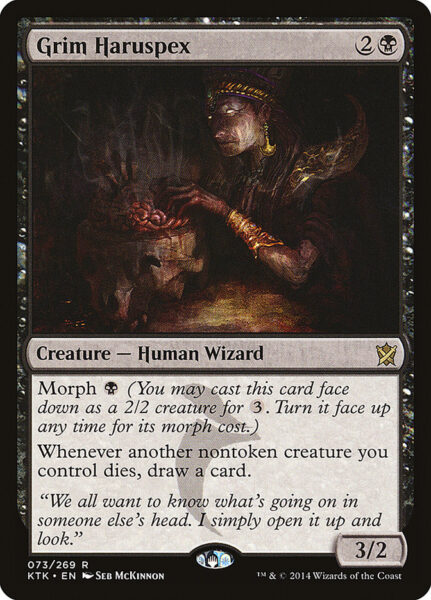
The Rest
We have a couple of cards that take advantage of our strategy in ways not detailed above. Here they are.
Grim Haruspex – there’s only one version of this card that’s $1, but that counts! I’ve yet to go off with this Human Wizard, but I envision sacrificing something like Fear of Lost Teeth, getting a bunch of various triggers, and drawing a card.
Mahadi, Emporium Master – a Treasure for each creature that dies? This Cat Devil is Disciple of the Vault‘s best friend.
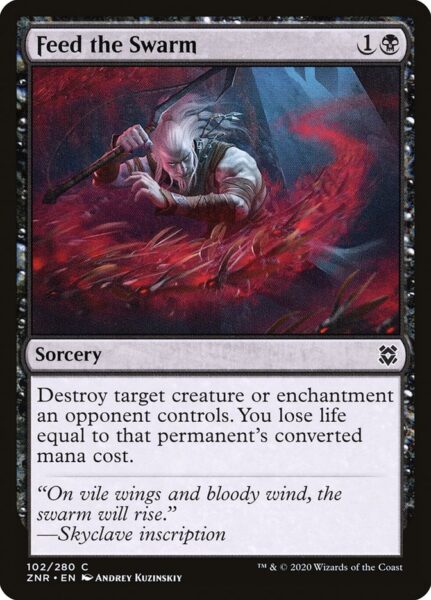
Feed the Swarm – having a way to deal with enchantments that might ruin our fun is important.
Flex Spots
We are essentially a combo deck looking to use a disparate group of underwhelming cards to grow our commander to lethal proportions. Thus, we want some number of each of the three necessary pieces of our combo: fodder, sac outlet, Blood Artist effects. When deciding what to cut to make room for something else, it’s easy if you’re swapping out Falkenrath Noble for Blood Artist. What you’ll want to be careful of, however, is taking out combo pieces for non-combo pieces. With that in mind, here’s the breakdown of each group in our deck.
We play 10 cards that serve as fodder for sacrifice, plus an additional seven ways of stealing one of our opponent’s creatures.
We play 14 sac outlets.
We have 33 Blood Artist effects, most of which don’t require a creature to die.
Given that we’ve diversified our means of dealing 1 damage and are not all in on sacrificing our creatures to achieve this goal, these numbers make sense. I’d let these guide you as to what to trim to make room for whatever card you’re looking to add.
Here’s the list of first cards out for me personally:
Grapeshot – it’s unlikely we’ll get more than a couple of triggers out of it once.
Disciple of Bolas – 4 mana is a lot and this card kind of feels like win-more.
Lightning Volley – again, 4 mana for an effect that is probably win-more, given that we’ve built our deck to do what this spell does.
For an extensive list of cards by category (though many will be outside of our budget) click here. In building and tweaking this deck, I’ve accumulated a pretty good stack of budget-friendly cards that didn’t make the cut. Here those are:
| Carnival/Carnage | |
| Final Vengeance | |
| Goblin Arsonist | |
| Infestation Sage | |
| Lethal Throwdown | |
| Okiba Reckoner Raid | |
| Bankrupt in Blood | |
| Cavalcade of Calamity | |
| Coruscation Mage | |
| Tibalt’s Rager | |
| Geth’s Verdict |
| Immolation Shaman | |
| Lithoform Blight | |
| Playful Shove | |
| Vengeful Devil | |
| Arcane Teachings | |
| Flick a Coin | |
| Geistflame Reservoir | |
| Pyre-Sledge Arsonist | |
| Outpost Siege | |
| Portent of Betrayal |
| Syndicate Enforcer | |
| Vigilante Justice | |
| Vindictive Vampire | |
| Garna, the Bloodflame | |
| Havoc Jester | |
| Spreading Insurrection | |
| Ob Nixilis of the Black Oath | |
| God-Pharaoh’s Statue |
Ideal Hand and Game Play
We want to curve into our commander with pieces to trigger him already in place. Thus, we want some fodder for sacrifice, a sac outlet, and a Blood Artist effect by turn 4 or 5 at the latest. Given that we have such a large variety of ways to trigger Ob Nixilis, we can keep hands that have multiple Blood Artist effects that we can deploy in the early game without the other necessary pieces. This is especially true if those effects are not contingent on creatures dying.
We really don’t want to wait until turns 3 or later to start committing permanents to the board. We need a critical mass of combo pieces to make Ob Nixilis lethal and win us the game, so the sooner we start putting those pieces down, the better. Don’t wait until you have the sac outlet to start casting Blood Artist effects. Trust in the heart of the cards that you’ll find what you need.
An exception to this are the 1-drop creatures that ping upon death. If you’re missing a way to sac them, it may behoove you to hold on to them until you do. After all, they’re cheap to cast and losing them to a sweeper for no extra value is not worth the early 1 or 2 points of damage you may chip in via combat with them.
Here’s a picture of an ideal hand:
This hand gives us multiple ways of pinging our opponent, a sac outlet, and at least one creature we’re happy to see die.
Weaknesses
Graveyard hate is one big issue. This can take many forms, but enchantments like Rest in Peace are the most problematic. Creatures that replace death with exile (Kalitas, Traitor of Ghet) hurt us as well, but we have several ways to kill creatures.
Lifegain can negate much of the incremental damage we do over the course of several turns, which is one reason I’ve included cards to stop this. However, many of these cards are holdovers from when Ob Nixilis, Captive Kingpin hadn’t been printed. Now that we have a commander we can grow so big that we can realistically 1-shot our opponent, it may be that we can cut back on some of these cards. Don’t forget, opponents can gain infinite life but still die to damage dealt by our commander.
Finally, one weakness I have not addressed yet is artifact hate, such as Cursed Totem. Shutting down our Viscera Seer can be problematic, while nerfing our many Prodigal Sorcerer effects is potentially game over for us. Thankfully, Commander is full of creatures with activated abilities, meaning it’s unlikely we’ll run into hate against it since it’ll probably nerf our opponent’s own creatures (Cursed Totem sees play in 1% of decks, for instance, according to edhrec.com). Furthermore, Red has plenty of options to shore up this weakness. Vandalblast is a powerful and flexible option, but there are many cards to choose from. It is probably correct to find room for at least one answer to artifacts.

Conclusion
Ob Nixilis, Captive Kingpin is the best Rakdos Aristocrat commander out there, no question. And this is still true after the printing of the new, hot commander, Valgavoth, Harrower of Souls. Even on a budget like ours, we can close out games extremely quickly, making our commander a must-answer threat or risk death. And the great thing about our deck is that all of this is possible thanks to a largely underwhelming group of cards. Our opponent will likely not want to use targeted removal on Viscera Seer or Lobber Crew. Short of sweepers, our combo pieces ought to stick around.
Of course, playing around sweepers IS important, so keep that in mind. Also be aware that since our deck is full of unlikely targets for removal spells, Ob Nixilis, Captive Kingpin will very likely die at least once before we can go off with him. For this reason, having one of our protection spells can be the difference between winning and losing.
As always, thanks for reading and watching! Do you have an Ob Nixilis deck? An Aristocrat deck? Who’s your commander? Have I forgotten any obvious inclusions for this budget build?
